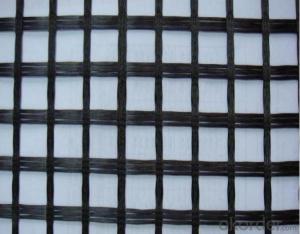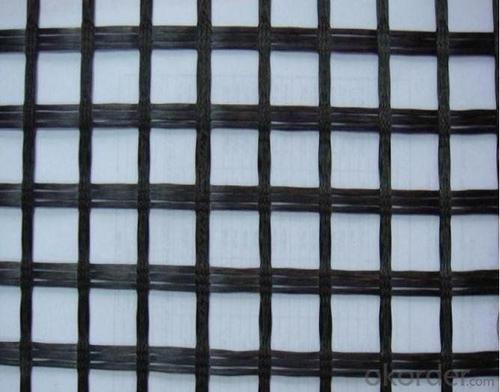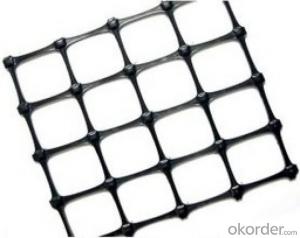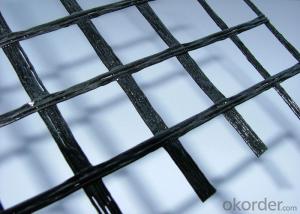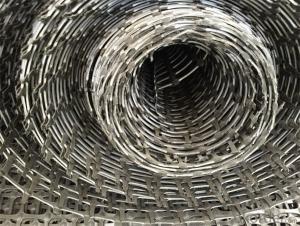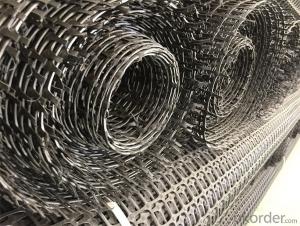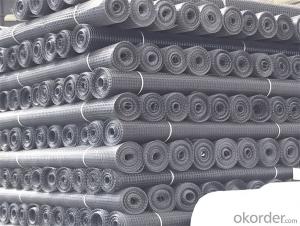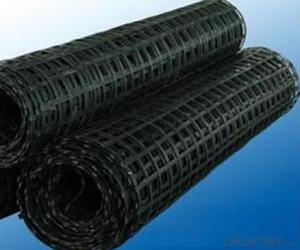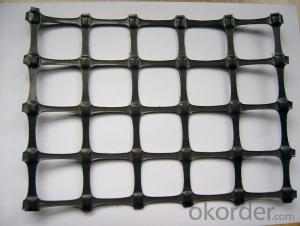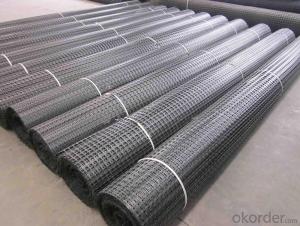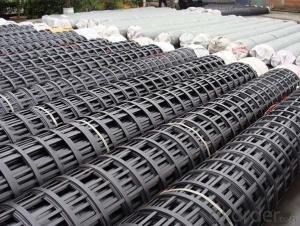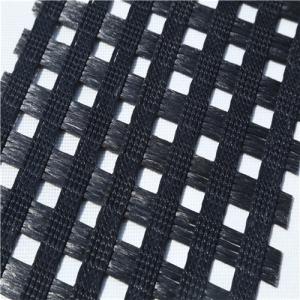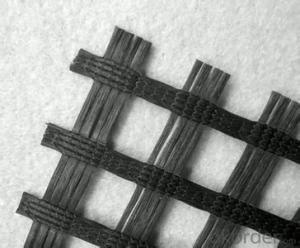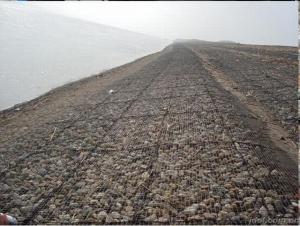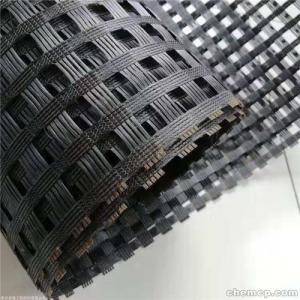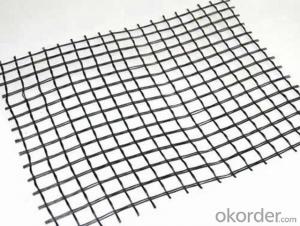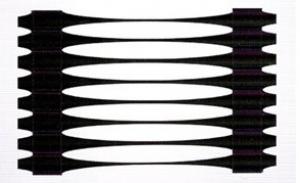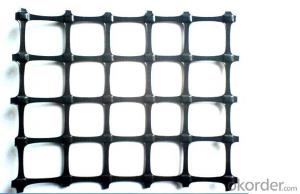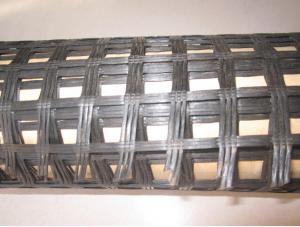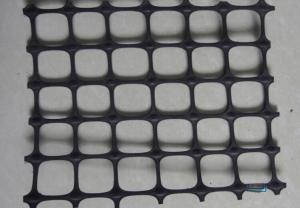High Strength PVC Coated Polyester Geogrids for Asphalt
- Loading Port:
- China main port
- Payment Terms:
- TT OR LC
- Min Order Qty:
- 5000 m²
- Supply Capability:
- 1000000 m²/month
OKorder Service Pledge
OKorder Financial Service
You Might Also Like
Introduction of Fiberglass Geogrid:
Fiberglass geogrid is based on fiberglass woven cloth coated with modified bitumen or PVC, it was developed to address the problem of pavement cracking on highways, roads and runways, driven by a need to reduce cost for infrastructure maintenance and repair.
It is characterized by high tensile strength in axial and lateral directions, low stretch rate, alkali-resistance, low temperature- resistance, as well as convenience in construction and low price. It can be used on pitch pavement to prevent cracks and prolong pavement service life. It also can be used as a basal reinforcement material for hillsides, reservoirs, harbors, ports, water channels, seawalls, etc.
Performance of Fiberglass Geogrid:
--- High strength, high modulus and low temperatures resistance.
Applications of Fiberglass Geogrid:
--- Reinforcement for road pavement
--- Reinforcement for railway basement
--- Reinforcement for Tunnel
--- Reinforcement for Slope
--- Reinforcement for embankment.
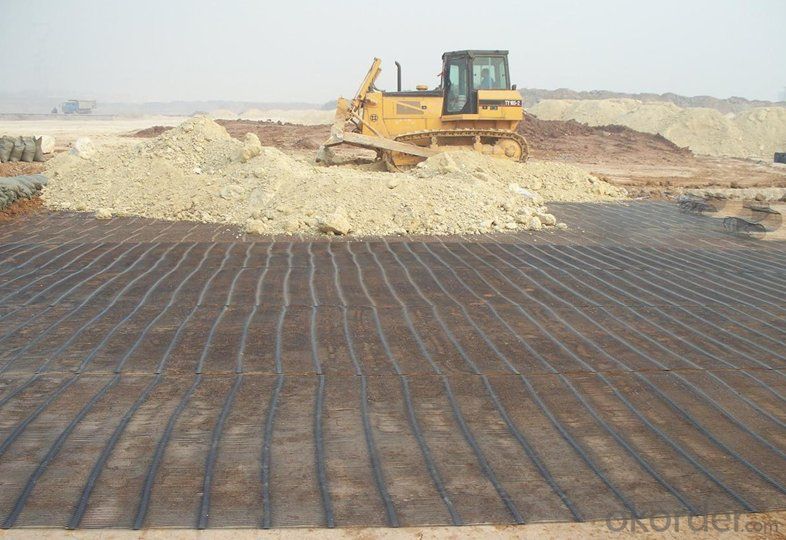
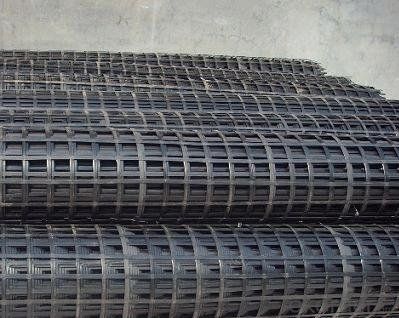
Features:
1.Intensity of vertically and horizontally from 20 KN/M to 150 KN/M
2.Low breaking elongation, not bigger than 3%
3.Suitable for each kind of soil environment
4.For treatment on surface, the rib suppresses the rough pattern, strengthens the grill surface the rough degree, enhances the GSZ steel plastic complex geogrid in the soil body friction factor.
5.It has more superior breadth, up to 2- 6 m, reducing construction joining, enhances the work efficiency.
6.High intensity, low creep and distorting
7.Resistant to erosion, longer life.
8.Easy and convenient to install, short period and low cost- saving. It can save project cost by 10%- 50%.
FAQ:
Q: Can you accept small trial order?
A: Yes, we accept small trial orders at reasonable charge.
Q:May I get one sample for checking out the quality? How much?
A: Yes, we supply sample free of charge, and the freight will be on buyer’s account, which is refundable when order confirmed.
Q: What is your MOQ?
A: Normally, 1000 m2 per order.
Q: What is your delivery time? Can we have it sooner?
A: 2 days for sample, 3-5 days against 1x40HQ
Q: What is your payment terms?
A: T/T, Paypal (3% surcharge), Western Union or 30% deposit 70% L/C.
- Q: Glass fiber grille material.
- In order to protect the glass fiber, improve the overall performance of the use of special coating treatment process of the composite materials.
- Q: Are geogrids resistant to creep deformation?
- Yes, geogrids are generally resistant to creep deformation.
- Q: Tgsg5050 what is the difference between Geogrid and gsz5050?
- Hello, "biaxial tensile plastic geogrid" is a general term, it can also be called two-way tensile polypropylene geogrid
- Q: Are geogrids resistant to hydrolysis?
- Yes, geogrids are generally resistant to hydrolysis.
- Q: Can geogrids be used in reinforced earth bridge piers?
- Yes, geogrids can be used in reinforced earth bridge piers. Geogrids are commonly used in reinforced earth structures to provide stability and increase load-bearing capacity. They can be used to reinforce the soil and provide additional support to bridge piers, improving their structural integrity and longevity.
- Q: Can geogrids be used in reinforcement of gabion structures?
- Yes, geogrids can be used in the reinforcement of gabion structures. Geogrids are commonly used to provide stability and enhance the strength of gabion walls by improving load distribution and reducing soil movement. They are typically installed horizontally within the gabion structure to increase its overall stability and prevent deformation.
- Q: What is the number of tensile elements of Geotextiles
- The number of stretching unit is mainly for the poor personal sense of woven geotextile, geogrid, geogrid or other similar loose material, the width of the tensile specimen of 1m unit number is 1m in the width of how many holes or how many lattice
- Q: How do geogrids improve the performance of reinforced soil walls?
- Geogrids improve the performance of reinforced soil walls by providing tensile strength and stability to the soil. They act as a reinforcement material that helps distribute the loads evenly, reducing the risk of wall failure due to excessive pressure or settlement. Additionally, geogrids increase the overall strength of the soil structure, allowing for the construction of taller and steeper walls.
- Q: How to determine the number of geogrid detection method
- 2) according to the design of the location, along the road to the laying of the grid, laying the grille, should pay attention to the connection between the grid and straightening smooth. Grille of the longitudinal and transverse joints can use nylon or polyester rope sewn or U nail connection method between the grid as a whole, grid overlapping width not less than 20cm, in the direction of the stress intensity of the joint shall not be less than the design tensile strength of materials. The grid distortion, fold, overlap, is not conducive to play its role, thus laying by hands straightened, the grid is smooth and uniform, geogrid every 1.5-2.0m paved with hook nail fixed on the ground.3) fill: after the completion of the grille, should be timely (48 hours) filling. Each layer should be carried out according to the principle of "the first two sides, the middle of the back". The packing is not allowed to be unloaded directly on the geogrid. It must be unloaded on the soil surface which has been paved. The soil unloading height is not more than 1m. All vehicles and construction machinery shall not be allowed to walk directly on the paved geogrid, but only to be allowed to travel along the axis of the embankment.4) the upper and lower sides of the geogrid, and 8 cm from the grid layer shall not be more than 6 cm in diameter.
- Q: What are the differences between uniaxial and biaxial geogrids?
- Uniaxial geogrids are designed to provide strength and stability in one direction, typically in a single plane. They have high tensile strength in one direction, making them suitable for applications such as soil reinforcement in retaining walls and embankments. On the other hand, biaxial geogrids are engineered to provide strength and stability in two perpendicular directions. They have high tensile strength in both the longitudinal and transverse directions, allowing them to distribute loads more uniformly. This makes biaxial geogrids versatile for various applications such as soil stabilization, slope reinforcement, and pavement reinforcement. In summary, the main difference between uniaxial and biaxial geogrids lies in their tensile strength orientation, with uniaxial geogrids providing strength in one direction and biaxial geogrids offering strength in two perpendicular directions.
Send your message to us
High Strength PVC Coated Polyester Geogrids for Asphalt
- Loading Port:
- China main port
- Payment Terms:
- TT OR LC
- Min Order Qty:
- 5000 m²
- Supply Capability:
- 1000000 m²/month
OKorder Service Pledge
OKorder Financial Service
Similar products
Hot products
Hot Searches
Related keywords
